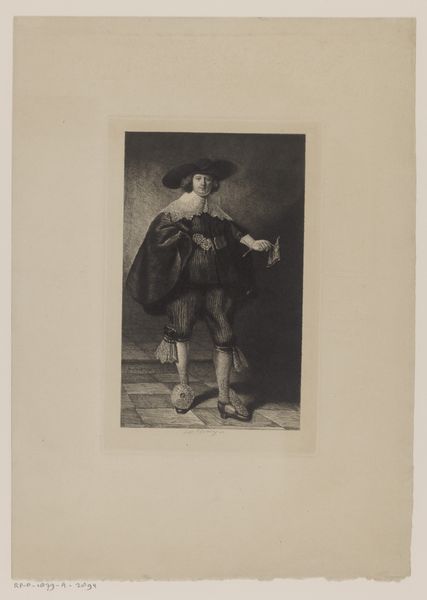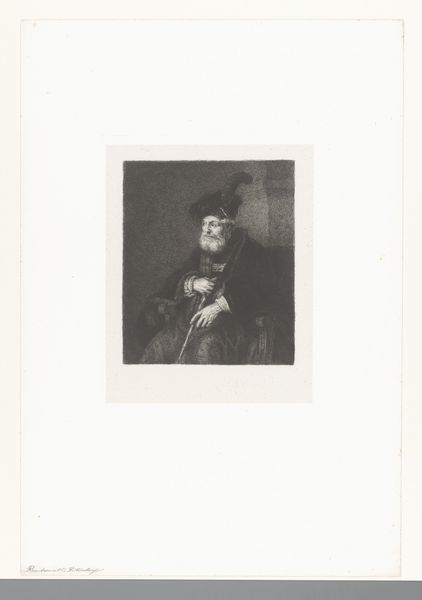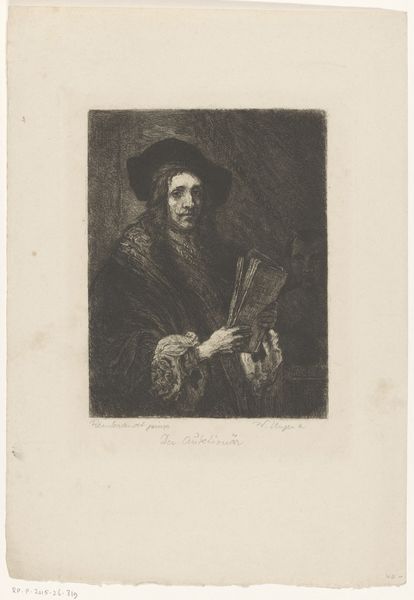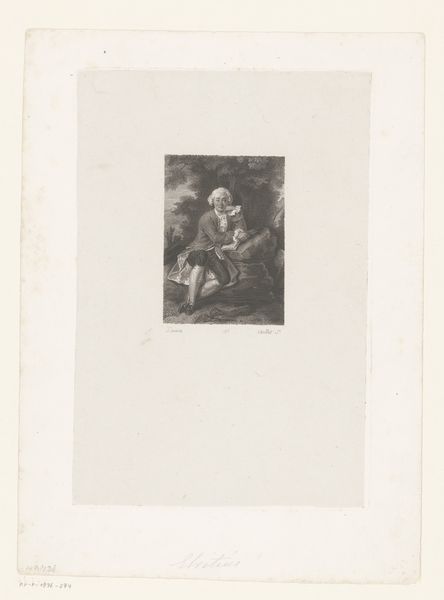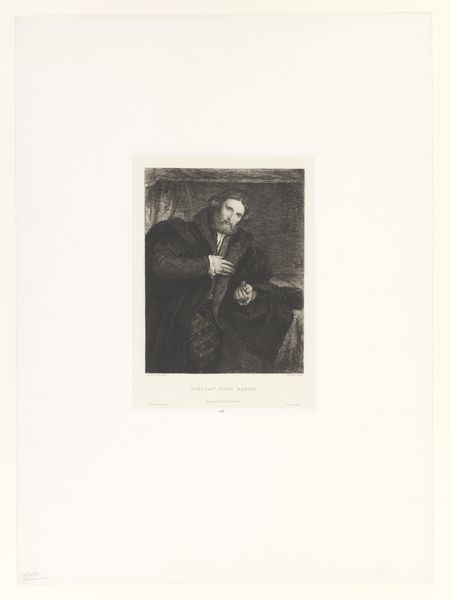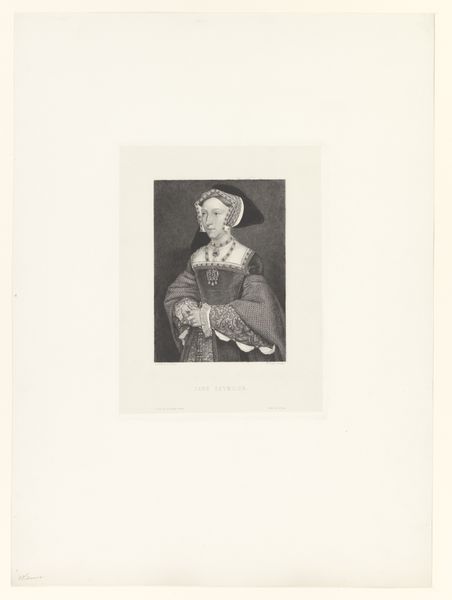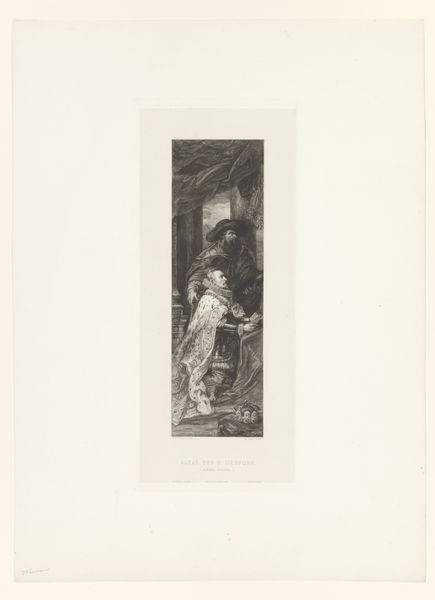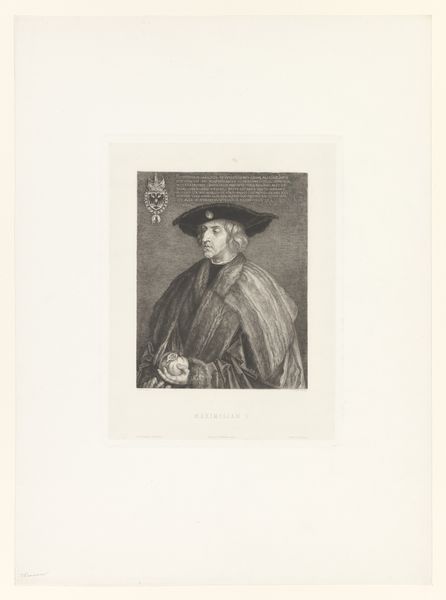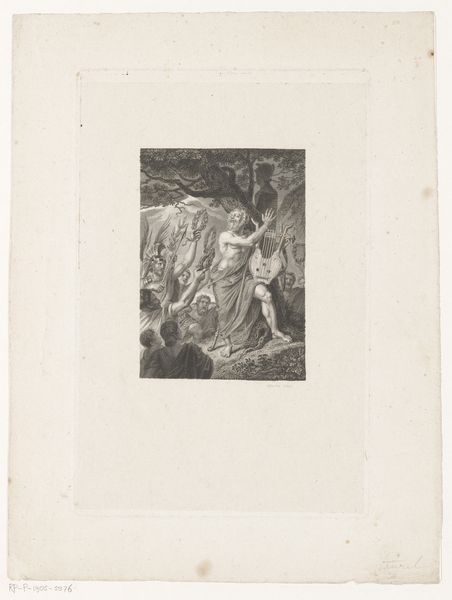
Zittende man met baard en ruime, donkere mantel houdt een gesloten boek vast 1830 - 1880
0:00
0:00
#
portrait
# print
#
book
#
history-painting
#
realism
Dimensions: height 504 mm, width 352 mm
Copyright: Rijks Museum: Open Domain
Curator: This is "Seated Man with Beard and Large, Dark Coat Holding a Closed Book," an etching by Adolphe Mouilleron, dating from sometime between 1830 and 1880. It's currently held in the Rijksmuseum. Editor: There's a certain gravitas, isn’t there? A deep shadow seems to both emanate from and envelop this figure. The stark contrast creates such depth despite being just a print. Curator: Precisely. The dramatic chiaroscuro underscores the subject’s solemnity. Consider how Mouilleron harnesses light to articulate form. Observe how the play of dark and light describes the volume of the heavy coat and emphasizes the book he clutches. Editor: And what is the impact of representing this historical figure? The way the lines are made denote labour-intensive process and evokes old-world craft and artisanal skill. It connects to its historic roots through production alone. Curator: The "history-painting" tag assigned by the museum does, in a way, speak to your argument, if you think of the portrait not as just a depiction, but as a semiotic system for signalling power. The book—closed, significantly—isn't meant to be read, it's a prop, a signifier of learning, authority, and, by extension, wealth. Editor: It’s interesting to me that printmaking—traditionally a means of wider circulation—should depict a member of the elite. The inherent material tension of printing as a technique is used here to communicate power. It must have reached far and wide through commerce. Curator: Certainly. One must also consider the social context in which this etching circulated, reproduced, and interpreted. Editor: Reflecting on the tangible effort poured into making this print heightens my appreciation for its historical value. The social history of art can tell us just as much as its composition and meaning. Curator: Absolutely. By understanding the complex web of meanings constructed around form, technique and production of an artwork like this one, we gain an enriching awareness.
Comments
No comments
Be the first to comment and join the conversation on the ultimate creative platform.

